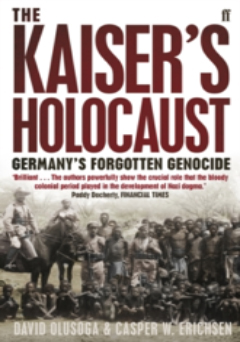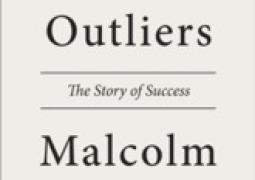
David Olusoga is a British-Nigerian historian, writer and broadcaster who has championed the unearthing of black history in series such as the BBC’s “Black and British: a Forgotten History”. “My family’s history is part of a long, long trajectory,” he says, “and British history is better, richer and more interesting if the relationship with Africans is weaved back into the bigger story.” In The Kaiser’s Holocaust, Olusoga and his collaborator Casper W. Erichsen shed light on a broader European tragedy, but one with its roots in colony and empire.
The Kaiser’s Holocaust uncovers the links between the German occupiers of what was then named South West Africa (SWA, now Namibia) and the Nazis. The pseudo-science that was practised in the field in Namibia informed the Nazis’ belief in their own racial superiority. The experience of colonial domination of another people, and the sense of racial entitlement derived from that, formed part of the ideology of the officers and troops who returned from SWA to Germany, influencing, for example, their symbols and their uniforms.
On 12 May 1883, the German flag was raised on the coast of South West Africa. This event marked the final phase of Germany’s late scramble for a piece of the African lands already seized and divided up by European forces of occupation. It was to end in the deaths of tens of thousands in the second most under-populated country on Earth.
The German occupation force employed the well-worn tactics of every imperial project. The indigenous population were removed from their lands by false promises, stealth and brute force. When the occupiers inevitably met with resistance from the Nama and Herero peoples, Germany began a war of extermination:
Thousands of the indigenous people were killed or driven out into the desert to die. By 1905, the survivors were interned in concentration camps, and systematically starved and worked to death.
The campaign began under General Alfred von Schlieffen in an atmosphere of ‘war fever’. “After all”, argued Otto Seifert, a German citizen, “we are … fighting against savages. Never must we allow the Negroes to prevail. The consequences of such a victory would be dire indeed since even now the Negroes believe that Africa belongs to them rather than the Lord above.” Despite the superior technology of the Germans, however, the first battle against the Hereros ended in a demoralising defeat for the raw volunteers and conscripts who had been drawn from the slums of German cities.
General van Trotha, described by one of the men serving under him as a “human shark,” and “the most bloodthirsty animal in [Kaiser Wilhelm’s] war arsenal”, was drafted in. His campaign had as its aim the annihilation of the Herero people, or their forced removal from their land. The Herero fighters were easily a match for the German forces, but were unable to protect an entire people from artillery fire, encirclement and summary execution When it became clear that genocide was not
possible by military means alone, five concentration camps were established, where forced labour and starvation were the norm. One camp was set up in Swakopmund, on the coastal strip of the Namib desert, today a popular holiday destination. Camp records suggest that “around 40% of the prisoners in Swakopmund died during their first four months in captivity, and any prisoner who entered the camp was likely to be dead within ten months.”
The later uprising by the Nama people ended in the same fate – starvation and engineered death. The rationale? The German anthropologist Leonard Schultz suggested that, for the colonial project to succeed, those races unfit for labour should disappear: “We, who build our houses on the graves of these races, have a responsibility to safeguard [our] civilisation, sparing no means.”
For Olusoga, the key elements of the tragedy played out in Namibia / SWA were an important driver in the rise of the Nazis and in their later expansionist policies in Eastern Europe. The brutal policies and practices of the colonial occupiers formed a template for the atrocities committed in the East, he suggests.
25 years later, the people and ideas that drove the ethnic cleansing of German South West Africa would influence the formation of the Nazi Party. Franz Ritter von Epp who served as a company commander under von Trotha, fought the Herero, and stayed on as concentration camps were established. He was later involved with setting up and overseeing Germany’s first concentration camp in Europe: Dachau.
The Freikorps units of 1919 fought to save the German nation from what they saw as the dangers of socialism. While the soldiers came mostly from the trenches of World War One, many officers were former colonial soldiers. The first Freikorps unit was commanded by General Ludwig von Maercker, who had served in German SWA. It was the Freikorps militia which crushed the Spartacist League uprising, and murdered Rosa Luxemburg.
The soldiers of the lost colonial empire in Africa became important members of the newly emerging Nazi Party in Munich. Serving under von Maercker was Reinhardt Heydrich, the architect of the Final Solution. The first Governor of German SWA was Hermann Goering’s father, Heinrich. The soldiers and scientists who were behind the genocide in modern-day Namibia would go on to play leading roles in the Nazi war of conquest in Eastern Europe.
Just as the soldiers of the lost colonial empire in Africa were key players in the emergence of the National Socialists as a political and paramilitary force in Munich, the philosophers of colonial expansion, racial inequality and Volkisch nationalism were among its most important intellectual benefactors.
What was most striking in the early stages of Nazism (1919-1923) as an ideology was its unoriginality. … the fact is that Nazism was not so much invented as reassembled.While imprisoned in the Landsberg Castle on the edge of Munich after his failed coup attempt, Hitler dictated his ideas to Rudolf Hess, in what was later to become Mein Kampf, his political manifesto. Olusoga shows how Hitler brought little that was new to his work. Instead, he borrowed from the scientific racism of colonial conquest, underpinned by social Darwinism and the belief that life was a “perpetual battle for existence in which the strong were predestined to overwhelm and destroy the weak.
A key text of the period, Human Heredity and Racial Hygiene, used research by Eugen Fischer conducted on the Rehoboth Basters of SWA. Fischer argued against the mixing of races, and for a programme of selective breeding. Hitler’s personal copy of the book survived the war The dedication on the frontispiece reads: “To Adolf Hitler, the primary fighter for the meaningful recognition of the race question as the most important cornerstone in our deepening knowledge.
The nostalgia for the settler paradise of South West Africa, lost following World War One, was transformed by the Nazi propaganda machine into a dream of Lebensraum, or land for German settlers, in the East. In a chilling twist of symbolism, the surplus brown uniforms of von Lettow-Forbeck’s campaign in German East Africa went on to clothe the Brownshirts or SA, the “first symbol of Nazi brutality.”
In summary, Olusoga argues that “there is no direct ‘causal thread’ linking the Herero and Nama genocides to the crimes of the Third Reich.” Instead, they can be seen as “aspects of a larger phonemenon: the emergence from Europe of a terrible strain of racial colonialism that .. regarded the earth as a racial battlefield on which the ‘weak’ were destined to be vanquished.”
When modern-day German tourists or Hollywood A-listers visit Swakopmund, they have little idea that the shifting sands around them hide a field of corpses occasionally revealed by the coastal winds. Long hidden from history, this is a chapter in European history that has at last been exposed.
Available at Timbooktoo Tel: 4494345





